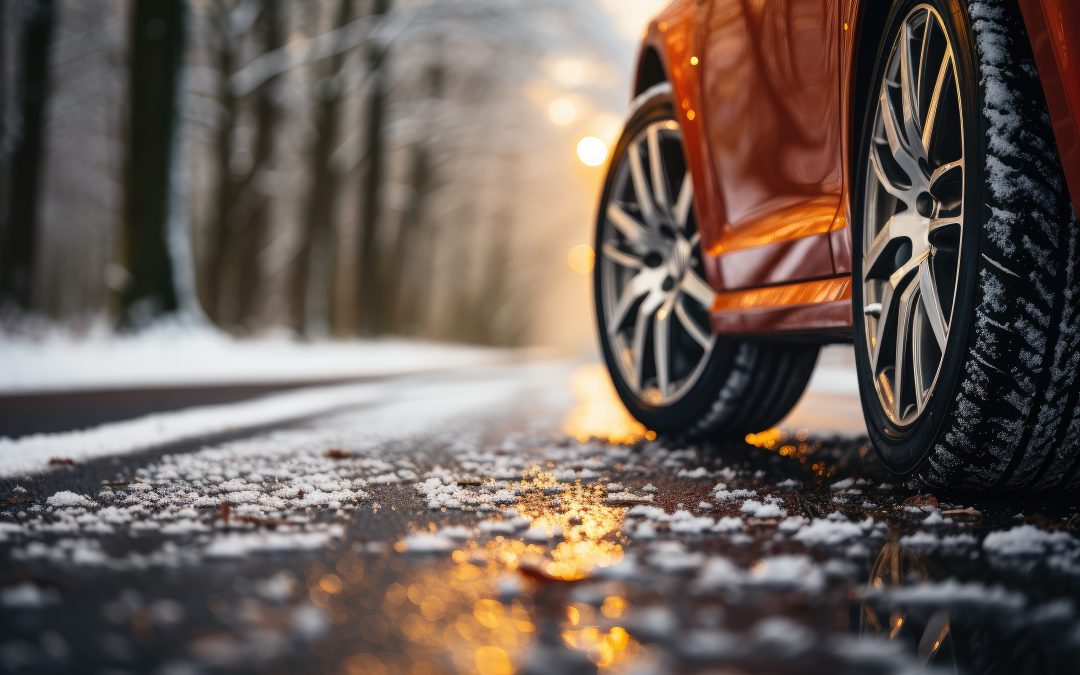Winter is on its way, and with it comes a host of challenges on the roads. While snow and ice often take the spotlight, the truth is that poor weather conditions in the colder months extend far beyond these elements. From heavy rain to foggy mornings, navigating the roads during winter demands a keen sense of caution and thorough preparation. Here’s a comprehensive guide to help you stay safe and avoid breakdowns when driving in adverse conditions this winter.
- Slow and Steady Wins the Race
Road conditions in winter, whether due to snow, sleet, rain, or fog, can be treacherous. No matter the weather, it’s essential to take a cautious approach. Stopping distances can significantly increase on slippery roads, making gentle manoeuvres and reduced speeds the linchpin of safe driving.
- Drive with Due Diligence
If you’re feeling under the weather or taking medication that could induce drowsiness, it’s best to avoid taking the wheel. Such conditions can compromise your reaction times, heightening the risk during challenging weather.
- Plan and Prepare
- Allocate extra time for your winter trips.
- Opt for major roads, which receive more frequent clearing and gritting.
- Factor in an extra ten minutes for de-icing your vehicle.
- Ensure you’re wearing comfortable, dry shoes to prevent slippage on the pedals.
- Maintain your fuel levels, with at least a quarter of a tank for unexpected delays.
- Master Winter-Ready Driving Techniques
- When starting on icy terrain, initiate movement in second gear while gently releasing the clutch to prevent wheel-spin.
- Apply your brakes gently if necessary, as abrupt stops can lead to skidding.
- On uphill routes, keep a constant speed to avoid gear changes on the incline.
- While descending, reduce your speed before the descent, use a lower gear, and minimise braking to maintain control.
- Stuck in Snow or Ice?
If you find yourself immobilised in snow or ice, clear the wheels of snow and place a sack or rug in front of the driving wheels for added traction. Always ensure that your windows are thoroughly cleared before embarking on your journey.
- Stay Visible
With shorter daylight hours and an increased likelihood of rain and snow, visibility can be a significant issue in the winter. Regularly check all your car lights to ensure they are working correctly and keep their lenses clean. In muddy conditions, you may need to clean your lights after every trip. Remember to maintain clean number plates to avoid fines.
Keep in mind that you must use headlights when visibility is severely impaired. If you employ fog lights, remember to switch them off once visibility improves to prevent dazzling other drivers or obscuring your brake lights.
- The Case for Winter Tyres
Investing in winter or all-season tyres, made from special rubber for improved grip in cold, wet conditions, is a wise choice. Ensure your tyres have a minimum of 3mm of tread for winter driving.
- Electrical Care
Vehicle batteries often face added demands in winter due to lights, heating, and wipers. To prevent a flat battery, follow these steps:
- Deactivate electrical loads such as lights, heated rear windows, and wipers before attempting to start the engine.
- Employ short, 5-second bursts when using the starter.
- If the engine fails to start quickly, wait 30 seconds between attempts.
- For vehicles left unused, provide a regular overnight trickle charge.
- Guardian of Your Engine
Maintain a 50-50 mix of antifreeze and water for winter. This combination shields your engine from temperatures as low as -34°C. Certain types of antifreeze require replacement every two years, so make sure you’re using the correct type and adhere to your service schedule.
- Winter Driving Essentials
Equip your vehicle with these essential items to handle ice, snow, and dark winter nights:
- Ice scraper
- De-icer
- Torch with spare batteries
- First aid kit
Additionally, carry a fully charged mobile phone and power bank for staying in touch with loved ones or emergency services during unexpected delays or crises.
- In-Car Survival Kit
Lastly, prepare a winter emergency kit in case you get stranded in extreme weather conditions. Stock it with the following:
- Warm clothing, waterproofs, and high-visibility jackets
- Sturdy footwear
- Hot drinks and snacks
- Shovel
- Jump leads
- Warning triangles
By following these guidelines and keeping your vehicle in optimal condition, you’ll be well-prepared to navigate the roads safely, regardless of the prevailing weather conditions.
Stay safe and enjoy your winter travels!
